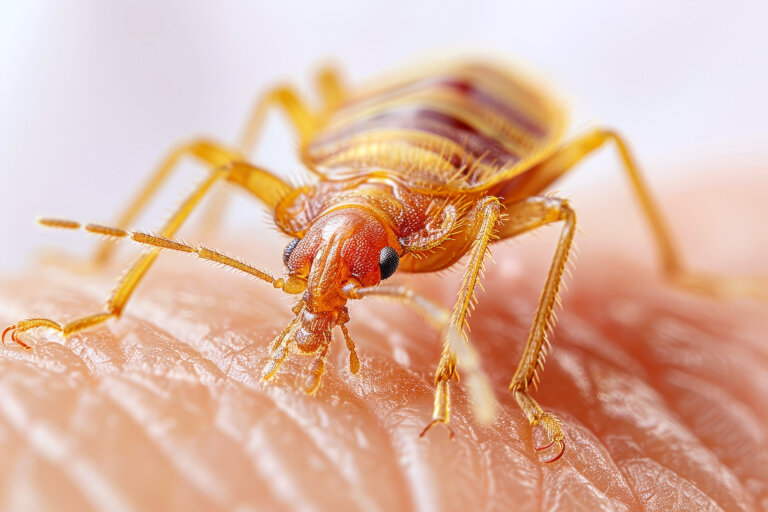Why Are Bed Bugs So Hard to Get Rid Of?
Bedbugs are especially hard to get rid of because they multiply so quickly. They’re also so good at hiding during the day. Their small, flattened bodies make it easy for them to disappear into bedding, mattresses, box springs, the structure of the bed. They can also hide in out-of-the-way cracks and clothing folds, electrical outlets, wiring conduits, electronic devices, and papers. Bedbugs like to congregate in clutter and furniture, as well as under loose wallpaper and behind wall hangings.
Usually at least 70 percent or more of an infestation stays within the bed structure and bedding. But as the size of an infestation increases, the adult females will start moving away to lay their eggs. Bedbugs will travel as far as 20 feet to and from a food source. This is why just getting rid of infested furniture and bedding won’t always solve the problem. In fact, it may just move the bedbugs around in your building and neighborhood and make the problem worse. Most furniture can be cleared of bedbugs with effective extermination methods.
Common Problems with Bed Bugs in Multiple Dwellings
Multiple dwellings offer bedbugs a perfect environment, since the bugs can hide in the walls while one unit is cleaned and then appear in another. They can even return to reinfest rooms or apartments. Hotels traditionally have been especially problematic. Their populations are transient. Bedding is often carried from one room to another. And while one infested unit might be cleaned, it’s rare for the entire hotel to be shut down so that all the rooms can be cleaned at once. For similar reasons, College dormitories, nursing homes, and shelters for homeless people are also extremely prone to bedbug infestations.
Bedbugs can go for months without feeding. They can lie low and wait patiently if an apartment is empty for a while. Some strains of bedbugs have developed resistance to pesticides. According to the Toronto Bed Bug Project Steering Committee’s report, by the 1950s it was “widely recognized that bedbugs across the world had become resistant to DDT.” In any case, very few pesticides kill the eggs, which means that more than one treatment may be necessary if pesticides are being used for eradication.
The apartment-by-apartment treatment favored by many landlords can also cause a bedbug problem to persist throughout a building. When an infested apartment is being treated, all adjoining apartments and even apartments across the hall should be inspected. And extermination should be carried out in them as necessary. Certainly, the landlord should be taking measures. This includes caulking and sealing to prevent the spread of bedbugs from one apartment to another.
What Can I Do About It?
Generally, a professional exterminator will have to be called in to get rid of all of the bedbugs and prevent a reinfestation, and you will have to do a lot of work both to prepare for the extermination and to make sure that the bedbugs stay away. It is not recommended that you try to get rid of them by yourself. Most people with a lot of experience in the field agree that there’s no “magic bullet” — there’s no one pesticide or technique that will solve the problem by itself.
If you’ve been exposed to bed bugs or if you have any questions, our New York Bed Bug Injury Attorneys will help you through the process of filing a claim. We will fight for your right to compensation. Call and speak to one of our New York Bed Bug Injury Attorneys at 646-504-7384 for a free consultation or via our contact page to learn more about your rights so that we can obtain the best outcome for you.

